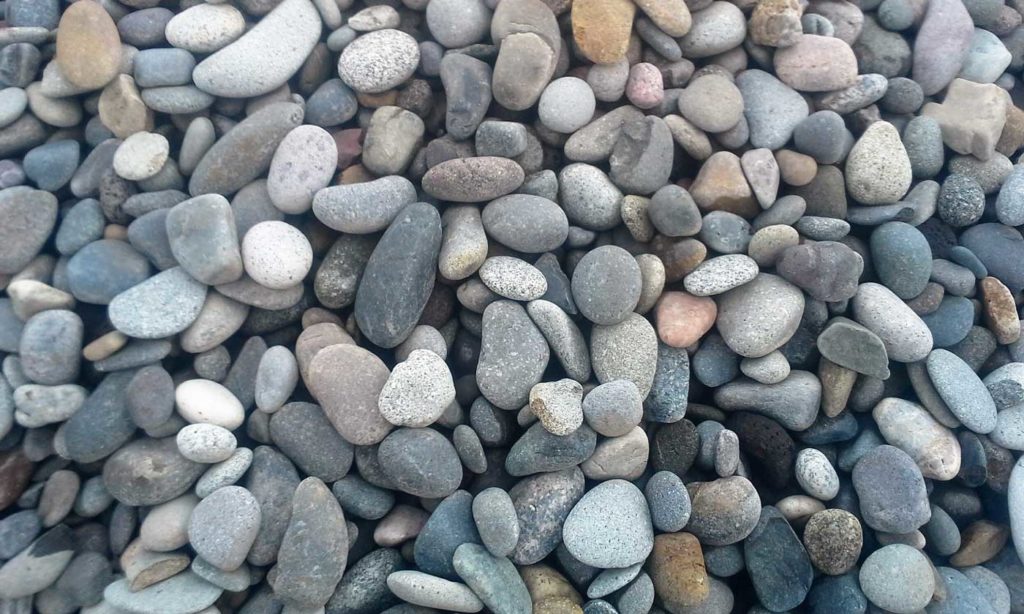Rocks can transform your landscape, adding beauty, functionality and visual interest. With the wide variety of rock types, colors, sizes and textures available, the possibilities are endless. But how do you choose the right rocks for your specific needs?
This guide covers the top rocks for landscaping along with tips on using each type to enhance your yard.
1. River Rock
River rocks are naturally smooth and rounded from tumbling in riverbeds. They come in a rainbow of earthy colors like tan, brown, gray, rust and white. Sizes range from small pebbles to large boulders over a foot wide.
Best Uses:
- Walkways – Use smaller river rocks that won’t shift underfoot
- Borders – Line garden beds and patios with colorful river rocks
- Dry Creek Beds – Imitate nature with meandering “rivers” of river rock
- Accents – Mix colors and sizes for visual interest
2. Crushed Granite
Crushed granite is made by mechanically breaking down granite boulders into smaller pieces approximately 1 inch in size. The angular chunks come in earth tones like gray, brown and reddish hues.
Best Uses:
- Mulch Alternative – Use around plants instead of bark mulch
- Paths – Pack firmly for a crushed gravel walkway
- Drainage – Loose crushed granite promotes drainage under patios
- Driveways – Pack tightly and top with finer gravel for a driveway
3. Pea Gravel
True to its name, pea gravel consists of tiny pebble-sized stones usually between 1/4 and 1/8 inches in diameter. Colors include gray, brown, white, red and mixed hues. The tiny smooth stones create a uniform surface.
Best Uses:
- Walkways and Patios – Comfortable underfoot for bare feet
- Pet Areas – Gentle on paws in dog runs or litter areas
- Play Areas – Safe surfacing for playsets, sandboxes and more
- Plant Fill – Decorative topping around potted plants
4. Decomposed Granite
Decomposed granite consists of tiny grains of granite broken down into sand-like particles. It has an earthy tan/gold color and provides a soft surface.
Best Uses:
- Informal Pathways – Rustic look for garden meandering paths
- Pet Areas – Cushioned surface for pets
- Ground Cover – Attractive loose alternative to mulch
- Xeriscaping – Excellent drainage properties
5. Flagstone
Flagstone comes in sandstone, bluestone, limestone and slate stone cut into irregular flat slabs. The natural cleft surface has ragged edges. Colors range from gray to blue to rusty red.
Best Uses:
- Stepping Stones – Narrow pieces make rustic stepping stone paths
- Patios – Broad flat pieces create a smooth patio surface
- Walls – Stack vertically as a retaining wall, garden accent or border
- Edging – Delineate a patio or bed with flagstone borders
6. Lava Rock
As the name implies, lava rock originates from volcanic lava flows. It has an irregular porous surface and comes in black, rusty red and dark gray. Lightweight lava rock won’t strain your back.
Best Uses:
- Fire Pits – Excellent drainage base under a fire pit
- Path Gravel – Use like decomposed granite for paths
- Mulch – Unique alternative to bark mulch, retains heat
- Accents – Striking color addition pooled with other stones
7. Fieldstone
Fieldstones are irregularly shaped rounded stones harvested from fields. Available in a variety of natural colors, sizes and shapes. Their imperfections add character.
Best Uses:
- Walls – Stack fieldstones into retaining walls or garden borders
- Steps – Use large flat fieldstones for steps and stair treads
- Accents – Scatter in gardens or use as stepping stones
- Patios – Lay flat fieldstones tightly together as rustic patios
8. Marble Chips
Tumbled marble chips provide an elegant polished touch. They come in white, gray, tan, black and other exotic marble colors. Smaller sizes work well in crafts or as accents.
Best Uses:
- Plant Fillers – Bright white marble pops against rich soil
- Container Gardens – Excellent drainage layer at the bottom
- Accent Areas – Highlight special features like fountains
- Path Infill – Fancy addition along formal garden paths
Tips for Using Landscaping Rocks
Follow these best practices when incorporating rocks into your landscape:
- Mix colors and textures for visual interest but don’t overdo it. Allow each rock type to stand out.
- Use larger anchored boulders paired with smaller accents for scale and stability.
- Match functionality to use – smooth and flat rocks underfoot, angular rocks for drainage.
- Prepare soil by removing weeds, leveling and tamping down before adding rocks.
- Start with a 2-4 inch gravel base layer for patios and paths to improve drainage.
- Bury rocks halfway into soil and pack tightly for stability on paths and patios.
- Allow proper drainage gaps between stones to prevent pooling water.
The appropriate rocks can enhance every part of your landscape. Follow this guide to pick the perfect stones for your specific landscaping needs. Let your creativity flow as you design the ideal rock features to complement your yard.

